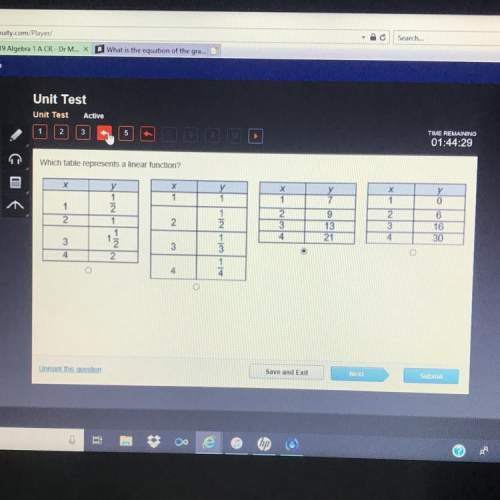
Mathematics, 21.05.2020 20:04, harleeGirl
An urban economist is curious if the distribution in where Oregon residents live is different today than it was in 1990. She observes that today there are approximately 3,109 thousand residents in NW Oregon, 902 thousand residents in SW Oregon, 244 thousand in Central Oregon, and 102 thousand in Eastern Oregon. She knows that in 1990 the breakdown was as follows:
72.7% NW Oregon, 20.7% SW Oregon, 4.8% Central Oregon, and 2.8% Eastern Oregon.
Can she conclude that the distribution in residence is different today at a 0.05 level of significance?
a) Yes, because the p-value = .0009.
b) No, because the p-value = .0009.
c) Yes, because the p-value = .0172.
d) No, because the p-value = .0172.

Answers: 1
Other questions on the subject: Mathematics

Mathematics, 21.06.2019 17:00, Damani14
According to modern science, earth is about 4.5 billion years old and written human history extends back about 10,000 years. suppose the entire history of earth is represented with a 10-meter-long timeline, with the birth of earth on one end and today at the other end.
Answers: 2

Mathematics, 21.06.2019 18:00, bravomichelle75
Aschool puts on a play. the play costs $1,200 in expenses. the students charge $4.00 for tickets. there will be one performance of the play in an auditorium that seats 500 people. what is the domain of the function that shows the profit as a function of the number of tickets sold?
Answers: 2


Mathematics, 21.06.2019 21:30, anaemigarcia
What is the solution to this system of equations? y= 2x - 3.5 x - 2y = -14
Answers: 2
Do you know the correct answer?
An urban economist is curious if the distribution in where Oregon residents live is different today...
Questions in other subjects:

History, 16.07.2021 20:50

English, 16.07.2021 20:50



Mathematics, 16.07.2021 20:50




Mathematics, 16.07.2021 20:50








